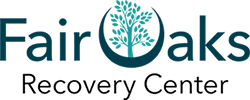Commonly Used Medications for Drug Treatment and Rehabilitation
 There are many tools available to help people who struggle with substance abuse to stop using alcohol and other drugs. While rehab, mental health counseling, and recovery meetings like AA and NA are well-known components of the treatment process, a lesser known option for people recovering from addiction is Medication Assisted Treatment (MAT).
There are many tools available to help people who struggle with substance abuse to stop using alcohol and other drugs. While rehab, mental health counseling, and recovery meetings like AA and NA are well-known components of the treatment process, a lesser known option for people recovering from addiction is Medication Assisted Treatment (MAT).
Medication Assisted Treatment (MAT)
According to the Substance Abuse and Mental Health Services Administration (SAMHSA), it is a common misconception that MAT simply substitutes one drug for another. MAT utilizes a controlled, safe level of prescription medications to address the initial withdrawal symptoms and ongoing cravings experienced by a person who is addicted to a particular substance.
When Is MAT Used?
Just like any other treatment option, MAT is not for everyone. For example, it can interact negatively with certain prescription medications, including those used to treat HIV. Individuals must also remain fully committed to recovery and compliance with their medication.
The specific medication used to treat a certain person is based on their drug of choice, as well as other factors unique to that person, such as medications they are already taking and other medical conditions they experience.
Does MAT Work?
One of the important questions to ask when considering any treatment is how effective that treatment is in addressing the problem at hand. According to an article in Psychology Today, when French doctors started prescribing buprenorphine to individuals with opiate addiction, the country saw a 79 percent decline in opioid-related overdoses in the subsequent four years and a reduction in the severity of withdrawal symptoms experienced by newborns of addicted mothers. Similar positive outcomes have been seen in other countries, including the United States, the United Kingdom, and the Netherlands.
Duration of MAT
Sometimes MAT medications are used for only a few weeks or several months. In other cases, a person may utilize them for years or even for the remainder of their life. Any of these durations are considered appropriate by the Food and Drug Administration (FDA).
It is recommended that anyone utilizing MAT work closely with their prescribing doctor before discontinuing their medication, as they may experience withdrawal symptoms if they do not follow proper procedures for removing themselves from MAT prescriptions.
MAT Treatment for Opioid Dependence
Opioids, including heroin, morphine, codeine, oxycodone, and hydrocodone are highly addictive and can be difficult for people to stop using. According to SAMHSA, there are three prescription medications most often used to address opioid dependence:
- Methadone – This medication tricks the brain into thinking it’s still getting the abused drug without the person getting high. Withdrawal doesn’t occur because the brain still thinks the drug is being used. Methadone is the only drug used in MAT that is approved for women who are pregnant or breastfeeding.
- Buprenorphine – Like methadone, buprenorphine suppresses and reduces cravings for the abused drug.
- Naltrexone – If a person using naltrexone relapses, naltrexone blocks the effects of the abused drug and prevents them from feeling high.
It is important to remember that these are medications a person takes regularly to try to avoid a relapse. They are different from naloxone (Narcan), which is used to revive a person who is experiencing an opioid-related overdose.
MAT Treatment for Alcohol Dependence
Opioids are not the only drugs for which MAT can help to address cravings. Alcohol addiction can also be treated with the use of prescription medications. The three medications SAMHSA reports are most commonly used to assist in recovery from alcohol are:
- Disulfiram – Disulfiram is most effective in people who have already gone through detoxification or are in the initial stage of abstinence. It should never be taken while intoxicated and it should not be taken for at least 12 hours after drinking alcohol. Nausea, headache, vomiting, chest pains, and difficulty breathing can occur as a result of combining this medication with alcohol.
- Acamprosate – This medication works to prevent people from drinking alcohol, but it does not prevent withdrawal symptoms after people drink alcohol.
- Naltrexone – Naltrexone blocks the effects of intoxication if someone consumes alcohol.
Part of a Bigger Treatment Plan
The FDA emphasizes that MAT is just one part of treating substance abuse and does not constitute a complete recovery program on its own. MAT should be used in combination with other methods, such as behavioral therapies, rehab, and recovery meetings.
The FDA supports continued innovation around MAT to aid people in recovering from substance use disorder. The National Institute on Drug Abuse reports that medications are being developed to treat stimulant (cocaine, methamphetamine) and cannabis (marijuana) addiction, but these are not yet available.
Support, Not Stigma
In order to ensure that more people have access to Medication Assisted Treatment (MAT), the FDA points out that stigmas must be overcome around this treatment option. The perception that people use MAT to continue abusing drugs must be erased and replaced with the notion that people utilizing MAT are trying to obtain or maintain a recovery lifestyle.
The National Institute on Drug Abuse reminds us that:
- No single treatment is right for everyone.
- Medications are often an important part of treatment, especially when combined with behavioral therapies.
- Treatment plans must be reviewed often and modified to fit the patient’s changing needs.
Learn More About Medication Assisted Treatment (MAT)
The SAMHSA-HRSA Center for Integrated Health Solutions offers a variety of publications about Medication Assisted Treatment (MAT). Individuals recovering from addiction, their support systems, practitioners, and others can use these resources to learn about the pros and cons of MAT, how to implement it, how to finance it, and more.
Because even more information about MAT would help in refining its use, the Centers for Disease Control and Prevention (CDC) is currently in the process of studying 3,500 patients in treatment for addiction in cities across the United States, to determine:
- Outcomes associated with treatment using Medication Assisted Treatment (MAT), compared to counseling without medication
- Treatment program factors linked to positive outcomes
- Patient characteristics that influence positive outcomes
- Health-related quality of life factors
The Fair Oaks Recovery Center team can help you to find treatments that are right for you or a loved one who is struggling with addiction.

For more information about
programs offered at Fair Oaks Recovery Center, opioid addiction treatment in California, please call us today at
(888) 576-0222.
BrightEdge\BEIXFClient Object
(
[connectTime:BrightEdge\BEIXFClient:private] => 46
[_get_capsule_api_url:BrightEdge\BEIXFClient:private] => https://ixfd1-api.bc0a.com/api/ixf/1.0.0/get_capsule/f00000000296879/873497517?client=php_sdk&client_version=1.5.12&base_url=https%3A%2F%2Ffairoaksrecoverycenter.com%2Fblog%2Fmedications-drug-treatment-rehabilitation%2F&orig_url=https%3A%2F%2Ffairoaksrecoverycenter.com%2Fblog%2Fmedications-drug-treatment-rehabilitation%2F&user_agent=Mozilla%2F5.0+AppleWebKit%2F537.36+%28KHTML%2C+like+Gecko%3B+compatible%3B+ClaudeBot%2F1.0%3B+%2Bclaudebot%40anthropic.com%29
[displayCapsuleUrl:BrightEdge\BEIXFClient:private] => https://ixfd1-api.bc0a.com/api/ixf/1.0.0/get_capsule/f00000000296879/873497517
[capsule:BrightEdge\BEIXFClient:private] => BrightEdge\Capsule Object
(
[accountId:protected] => f00000000296879
[publishingEngine:protected] => ixf-compiler
[dateCreated:protected] => 1.73632801687E+12
[datePublished:protected] => 1.73632801687E+12
[version:protected] => 1.0.0.0
[capsuleNodeList:protected] => Array
(
[0] => BrightEdge\Node Object
(
[type:protected] => bodystr
[dateCreated:protected] => 1.7363280185E+12
[datePublished:protected] => 1.73632801687E+12
[publishingEngine:protected] => link-block
[engineVersion:protected] => 1.0.0.0
[metaString:protected] =>
[content:protected] =>
[feature_group:protected] => body_1
[redirectType:BrightEdge\Node:private] =>
[redirectURL:BrightEdge\Node:private] =>
)
[1] => BrightEdge\Node Object
(
[type:protected] => headstr
[dateCreated:protected] => 1.73632801857E+12
[datePublished:protected] => 1.73632801687E+12
[publishingEngine:protected] => app-js
[engineVersion:protected] => 1.0.0.0
[metaString:protected] =>
[content:protected] =>
[feature_group:protected] => _head_open
[redirectType:BrightEdge\Node:private] =>
[redirectURL:BrightEdge\Node:private] =>
)
)
[configList:protected] => stdClass Object
(
[page_groups] => Array
(
[0] => stdClass Object
(
[priority] => 1
[include_rules] => Array
(
[0] => .*fairoaksrecoverycenter\.staging\.tempurl\.host\/.*
)
[name] => staging
[exclude_rules] => Array
(
)
)
[1] => stdClass Object
(
[priority] => 2
[include_rules] => Array
(
[0] => fairoaksrecoverycenter\.com
)
[name] => Global Settings
[exclude_rules] => Array
(
)
)
)
)
[pageGroupNodes:protected] => Array
(
[0] => BrightEdge\Node Object
(
[type:protected] => bodystr
[dateCreated:protected] => 1.7363280185E+12
[datePublished:protected] => 1.73632801687E+12
[publishingEngine:protected] => link-block
[engineVersion:protected] => 1.0.0.0
[metaString:protected] =>
[content:protected] =>
[feature_group:protected] => body_1
[redirectType:BrightEdge\Node:private] =>
[redirectURL:BrightEdge\Node:private] =>
)
)
[allPageGroupNodes:protected] => stdClass Object
(
[excluded_config] => Array
(
[0] => stdClass Object
(
[feature_group] => body_1
[engine_version] => 1.0.0.0
[content] =>
[date_published] => 1736328016866
[date_created] => 1736328018500
[type] => bodystr
[publishing_engine] => link-block
)
)
[staging] => Array
(
[0] => stdClass Object
(
[feature_group] => body_1
[engine_version] => 1.0.0.0
[content] =>
[date_published] => 1736328016866
[date_created] => 1736328018500
[type] => bodystr
[publishing_engine] => link-block
)
)
[Global Settings] => Array
(
[0] => stdClass Object
(
[feature_group] => body_1
[engine_version] => 1.0.0.0
[content] =>
[date_published] => 1736328016866
[date_created] => 1736328018503
[type] => bodystr
[publishing_engine] => link-block
)
)
)
[pageGroup:protected] => Global Settings
)
[_capsule_response:BrightEdge\BEIXFClient:private] => {
"account_id": "f00000000296879",
"date_published": 1736328016866,
"key": "-0",
"is_universal_capsule_enabled": "false",
"capsule_version": "1.0.0.0",
"engine_version": "1.0.0.0",
"version": 2,
"date_created": 1736328016866,
"nodes": [
{
"feature_group": "body_1",
"engine_version": "1.0.0.0",
"content": "",
"date_published": 1736328016866,
"date_created": 1736328018503,
"type": "bodystr",
"publishing_engine": "link-block"
},
{
"feature_group": "_head_open",
"engine_version": "1.0.0.0",
"content": "\n\n\n",
"date_published": 1736328016866,
"date_created": 1736328018572,
"type": "headstr",
"publishing_engine": "app-js"
}
],
"config": {
"page_groups": [
{
"priority": 1,
"include_rules": [
".*fairoaksrecoverycenter\\.staging\\.tempurl\\.host\\/.*"
],
"name": "staging",
"exclude_rules": []
},
{
"priority": 2,
"include_rules": [
"fairoaksrecoverycenter\\.com"
],
"name": "Global Settings",
"exclude_rules": []
}
]
},
"publishing_engine": "ixf-compiler",
"page_group_nodes": {
"excluded_config": [
{
"feature_group": "body_1",
"engine_version": "1.0.0.0",
"content": "",
"date_published": 1736328016866,
"date_created": 1736328018500,
"type": "bodystr",
"publishing_engine": "link-block"
}
],
"staging": [
{
"feature_group": "body_1",
"engine_version": "1.0.0.0",
"content": "",
"date_published": 1736328016866,
"date_created": 1736328018500,
"type": "bodystr",
"publishing_engine": "link-block"
}
],
"Global Settings": [
{
"feature_group": "body_1",
"engine_version": "1.0.0.0",
"content": "",
"date_published": 1736328016866,
"date_created": 1736328018503,
"type": "bodystr",
"publishing_engine": "link-block"
}
]
}
}
[allowDirectApi:BrightEdge\BEIXFClient:private] => 1
[debugMode:BrightEdge\BEIXFClient:private] =>
[disableRedirect:BrightEdge\BEIXFClient:private] =>
[deferRedirect:BrightEdge\BEIXFClient:private] =>
[_normalized_url:BrightEdge\BEIXFClient:private] => https://fairoaksrecoverycenter.com/blog/medications-drug-treatment-rehabilitation/
[_original_url:BrightEdge\BEIXFClient:private] => https://fairoaksrecoverycenter.com/blog/medications-drug-treatment-rehabilitation/
[client_user_agent:BrightEdge\BEIXFClient:private] => Mozilla/5.0 AppleWebKit/537.36 (KHTML, like Gecko; compatible; ClaudeBot/1.0; +claudebot@anthropic.com)
[errorMessages:protected] => Array
(
)
[profileHistory:protected] => Array
(
[0] => Array
(
[0] => constructor
[1] => 46
)
[1] => Array
(
[0] => getFeatureString
[1] => 0
)
[2] => Array
(
[0] => getFeatureString
[1] => 0
)
)
[config] => Array
(
[sdk.environment] => production
[api.endpoint] => https://ixfd1-api.bc0a.com
[sdk.charset] => UTF-8
[sdk.account] => f00000000296879
[sdk.connectTimeout] => 1000
[sdk.socketTimeout] => 1000
[sdk.crawlerConnectTimeout] => 1000
[sdk.crawlerSocketTimeout] => 1000
[whitelist.parameter.list] => ixf
[forcedirectapi.parameter.list] => ixf-api|ixf
[flat.file] => true
[sdk.proxyPort] => 0
[sdk.proxyProtocol] => http
[crawler.useragents] => google|bingbot|msnbot|slurp|duckduckbot|baiduspider|yandexbot|sogou|exabot|facebot|ia_archiver|brightedge
[content.base.path] => /nas/content/live/fairoaksrecove/wp-content/themes/valley
[diagnostic.type] => full_encrypted
[diagnostic.string] => 1
[capsule.mode] => remote.prod.capsule
[page.independent] => false
)
)
 There are many tools available to help people who struggle with substance abuse to stop using alcohol and other drugs. While rehab, mental health counseling, and recovery meetings like AA and NA are well-known components of the treatment process, a lesser known option for people recovering from addiction is Medication Assisted Treatment (MAT).
There are many tools available to help people who struggle with substance abuse to stop using alcohol and other drugs. While rehab, mental health counseling, and recovery meetings like AA and NA are well-known components of the treatment process, a lesser known option for people recovering from addiction is Medication Assisted Treatment (MAT).


